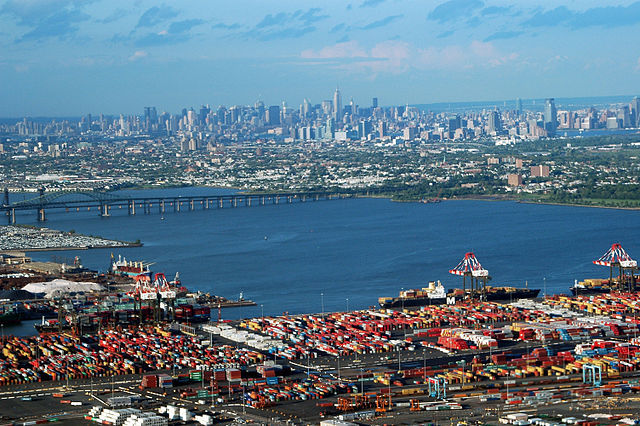 The improving economy of the United States is cascading to the Port of New York and New Jersey, with the port boasting a new annual record in cargo volumes in 2014.
The improving economy of the United States is cascading to the Port of New York and New Jersey, with the port boasting a new annual record in cargo volumes in 2014.
The Port Authority of New York and New Jersey said in an official release that the port surpassed last year the previous record set in 2012, reflecting the strengthening trade activity of the country.
During 2014, the port handled 3,342,286 cargo containers, an increase of 5.4 percent over the previous year and 4.1 percent more than in 2012, when the previous annual record was established.
“The record volumes allowed the port to maintain its position as the busiest on the East Coast with nearly 30 percent of the total market share,” said the authority.
ExpressRail, the Port Authority’s ship-to-rail system serving New York and New Jersey marine terminals, also set a new record, handling 465,405 containers during the year, up 9.3 percent over 2013. The previous annual record was set in 2012, with 433,481 containers handled.
“Our port is continuing to reap the benefits of an uptick in the economy, which has resulted in the hiring of more dockworkers and economic growth for the region,” said Port Authority Executive Director Pat Foye. “We plan to continue our investments in the port in the coming years to maintain the port’s 296,000 direct and indirect jobs and to cement our port as the East Coast’s leading destination.”
“We made progress last year to more efficiently handle the level of cargo coming into this port, but we clearly recognize more needs to be done,” said Port Authority Port Commerce Director Richard Larrabee. “We have a clear plan moving forward to meet the challenges that lie ahead to ensure that we can accommodate the larger ships and the cargo volumes that want to come to the New York-New Jersey region.”
In 2014, the port reported a 12.8 percent decrease in vehicles handled in the port—from 451,900 units handled in 2013 to 393,931 handled in 2014. To attract new vehicle business to the port in 2015, the Port Authority began a targeted incentive program in April 2014 to attract new automobile manufacturers and to provide incentives to existing ones to increase the port’s vehicle volumes.
During 2014, China remained the top import country serving the port, with 923,975 import containers. Following China are Germany (179,715 import containers) and India (176,621 import containers). The top import commodities in 2014 were furniture, beverages, and appliances.
In 2014, there were 2,432 vessel calls in the port, down 2.3 percent from the 2,488 vessel calls in 2013. The fewer vessel calls illustrate that much of the cargo coming into the port is arriving in larger ships, a trend that the port expects will continue after the Bayonne Bridge is raised.
Construction on the US$1.6 billion bridge project is continuing, and when completed in the summer of 2016, will allow new, larger post-Panamax vessels to travel underneath it. Work also is continuing on the 50-foot harbor deepening project, which also is expected to be completed early 2016. The project also will allow new, larger vessels to call on port terminals, said the agency.
To continue the port’s ability to handle increasing cargo volumes, the Port Authority formed a Port Performance Task Force in December 2013 to explore ways to improve efficiency and service reliability at the port. The task force developed a series of 23 recommendations that if implemented would reduce truck congestion and air emissions in the Port of New York and New Jersey, improve customer service for truckers and other port stakeholders, and enhance the flow of goods to and from the marketplace. A group of port stakeholders—the Council on Port Performance—has been formed to begin the task of planning and implementing the recommendations.
Founded in 1921, the Port Authority of New York and New Jersey builds, operates, and maintains many of the most important transportation and trade infrastructure assets in the country. The agency’s network of aviation, ground, rail, and seaport facilities is among the busiest in the country, supports more than 550,000 regional jobs, and generates more than $23 billion in annual wages and $80 billion in annual economic activity.
Photo: Maureen from Buffalo, USA









